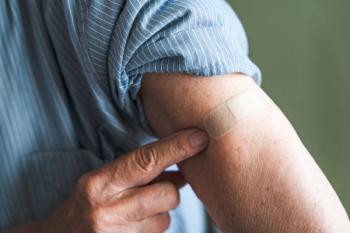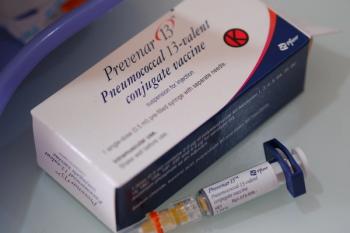
Decreased Cervical Cancer Incidence Associated with HPV Vaccination
Human papillomavirus (HPV) vaccination has significantly decreased the incidence and mortality of cervical cancer in girls and women between the ages of 15 and 24, according to a research letter in JAMA Pediatrics.
“We have seen promising data from randomized trials showing decreased HPV incidence after vaccination,” said co-principal investigator Justin Barnes, MD, a radiation oncology resident at Washington University School of Medicine in St. Louis, Missouri. “Emerging population data have also suggested decreased cervical cancer incidence associated with HPV vaccination.”
The study authors hypothesized that sufficient time had passed since the availability of the HPV vaccine in 2006 to assess for early changes in incidence and mortality rates for cervical cancer.1
National age-adjusted cervical cancer data from January 2001 through December 2017 for females aged 15 to 39 were obtained from the combined Surveillance, Epidemiology, and End Results (SEER), and National Program of Cancer Registries (NPCR) databases for incidence and the National Center for Health Statistics (NCHS) for mortality.
From January 2001 through December 2017, cervical cancer rates were 0.68, 5.47, and 12.60 per 100,000 females in the groups aged 15 to 24, aged 25 to 29 and, aged 30 to 39, respectively.
For cervical cancer mortality, the rates were 0.06, 0.57, and 1.89, respectively.
The percentage reduction in the incidence of cervical cancer from 2001 through 2005 (prevaccination) to 2010 through 2017 (postvaccination) was 37.70% in the younger age group greater compared to a reduction of 16.16% in the mid-age group and 8.03% in the oldest group (relative change P < 0.001).
The change in cervical cancer mortality was -43.35%, +4.36%, and -4.71%, respectively (relative change P< 0.01).
“Because averted deaths from cervical cancer due to HPV vaccination would be expected to be sequelae of stopping the development of cancer, the remarkably similar changes in incidence and mortality for 15 to 24-year-old females are consistent with this proposed mechanism,” Barnes told Contemporary OB/GYN.
Perhaps the easiest way to “cure” cancer is to prevent it altogether, according to Barnes. “With these data showing fewer cervical cancer cases and deaths, it is hard to think of a simpler intervention to cure cancer than HPV vaccination,” he said.
Although HPV vaccination rates in teenage females are improving, “efforts to improve these vaccination rates remain important,” said Barnes, noting that barriers include parental concerns about their child’s sexuality, worries about vaccination in general, limited awareness of HPV, and HPV-mediated cancer awareness, and restricted access to healthcare in some populations.
“Overcoming these obstacles will likely require multifaceted interventions on multiple levels–individual, local and national–including education efforts and policy changes,” Barnes said.
Furthermore, additional data will be needed to understand the full effects of vaccination on cervical cancer outcomes because most of the impact of HPV vaccines on incidence and mortality is not expected until the vaccinated cohorts reach older ages when cervical cancer is much more prevalent.
“Nonetheless, with these encouraging early data, we expect that the burden of cervical cancer in the United States will be substantially lower in the not-too-distant future,” Barnes said. “As an oncologist, I am thrilled at the prospect of seeing far fewer women and their families face this disease.”
Reference:
1. Tabibi T, Barnes JM, Shah A, et al. Human papillomavirus vaccination and trends in cervical cancer incidence and mortality in the US. JAMA Pediatr. Published online November 29, 2021. doi:10.1001/jamapediatrics.2021.480
This article originally appeared on Contemporary OB/GYN .
Newsletter
Pharmacy practice is always changing. Stay ahead of the curve with the Drug Topics newsletter and get the latest drug information, industry trends, and patient care tips.



































































































































